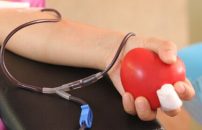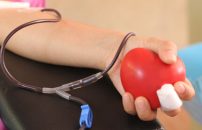During primary angioplasty, it is not uncommon to see several other lesions in coronary arteries. Current guidelines advise against the treatment of these lesions in the same primary angioplasty procedure, although there is evidence supporting such a course of action that may warrant changes in these recommendations. The functional assessment of these nonculprit lesions may…
Clopidogrel or Ticagrelor in Patients with Acute Coronary Syndrome Treated with New-Generation DES: CHANGE DAPT
Courtesy of Dr. Pablo Baglioni. This is a prospective observational study with a 1-year follow-up analyzing 2062 patients with acute coronary syndrome (ACS) who have been treated with coronary angioplasty using new-generation drug-eluting stents (DES). Patients were included between December 21, 2012 and August 25, 2015. On May, 2014, due to changes in international guidelines, clopidogrel…
Arterial Access After Thrombolysis
In the subgroup of patients with ST-segment elevation myocardial infarction who fail thrombolysis, transradial access reduces both bleeding and mortality, according to the results of this new study recently published in JACC Cardiovascular Interventions. Overall, transradial access following failed thrombolysis was associated with a 70% reduction in vascular complications, a 28% reduction in combined in-hospital…
Ischemic and Bleeding Risk After Primary Angioplasty
Patients with ST-segment elevation myocardial infarction who undergo primary angioplasty are at high risk for both ischemic and bleeding events, which affect significantly both morbidity and mortality. An optimal selection of antithrombotic therapies in terms of strength and duration must take into account the timing for the procedure, since the risk for these complications may…
NCDR ACTION Registry: Anticoagulated Patients with No Higher Risk of Bleeding in Emergency Procedures
Patients with a history of atrial fibrillation treated with warfarin or any of the new direct oral anticoagulants undergoing acute myocardial infarction do not present higher risk of bleeding when receiving angiography or angioplasty. In fact, this subgroup of anticoagulated patients showed lower in-hospital mortality than the control group. After analyzing 6471 patients undergoing ST elevation MI…
Though on the Rise, the Transradial Approach to Primary PCI Remains Underused
There is evidence to support the use of the transradial approach to coronary angioplasty. Several randomized studies have shown reduced bleeding and vascular complications when adopted, compared against patients treated with the femoral approach. There are also studies and meta-analysis suggesting that, in the context of primary PCI, the benefit would be even bigger, with significant events…
TCT 2017 | REDUCE: 3 vs 12 Months of Dual Antiplatelet Therapy with the New Combo DES
Courtesy of SBHCI. This new device has, on one hand, an abluminal sirolimus coating, and on the other hand, a luminal CD34 antibody coating for EPC capturing, to potentially accelerate post-PCI reendothelization. Between 2014 and 2016, the study included 1496 patients undergoing acute coronary syndrome (ACS), receiving the new COMBO stent. These patients were randomized…
CULPRIT-SHOCK Results Will Transform Guidelines and Clinical Practice
Courtesy of the SBHCI. After treating the culprit lesion in patients with acute myocardial infarction complicated by cardiogenic shock, continuing revascularization of all other lesions worsens outcomes. This finding of the CULPRIT-SHOCK trial has changed entirely the way we treated this patient group and will surely modify guidelines. Culprit-lesion treatment with the option to perform…
Impella Improves Safety in High Risk Unprotected Left Main PCI
Courtesy of Dr. Carlos Fava. The incidence of unprotected left main severe stenosis ranges between 4 and 8%, and it’s mostly associated with multivessel disease. The use of left ventricular support devices in high risk unprotected left main PCI is on the rise, but not much information available in this regard. Read also: “Prior assistance…
Early Coronary Angiography in High-Risk Non-ST-Elevation ACS
Coronary angiography is essential for patients admitted with non-ST-elevation acute coronary syndrome, since it allows physicians to confirm the diagnosis, stratify the risk, and define the revascularization and antithrombotic management strategies. There is no doubt that these patients should be studied invasively, but the timing for that is still uncertain. Coronary catheterization within…
DETO2X-AMI: Supplemental O2 Provides No Benefit for Patients with Suspected Infarction
According to this study simultaneously presented at the European Society of Cardiology Congress 2017 and published in the New England Journal of Medicine, routinely providing supplemental oxygen therapy to patients without hypoxemia with suspected acute myocardial infarction did not result in a reduction in the 1-year risk of all-cause mortality when compared with patients receiving…










